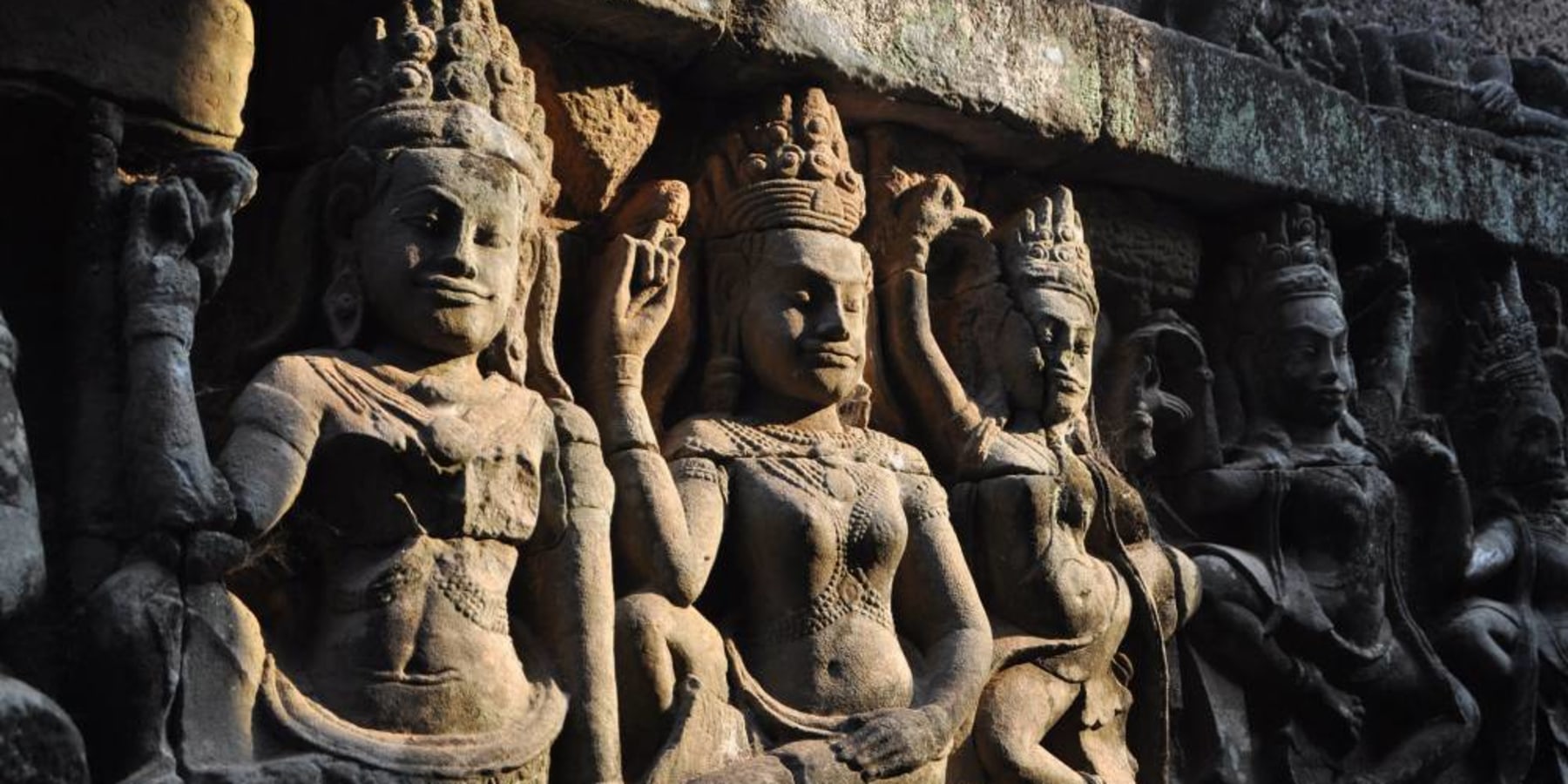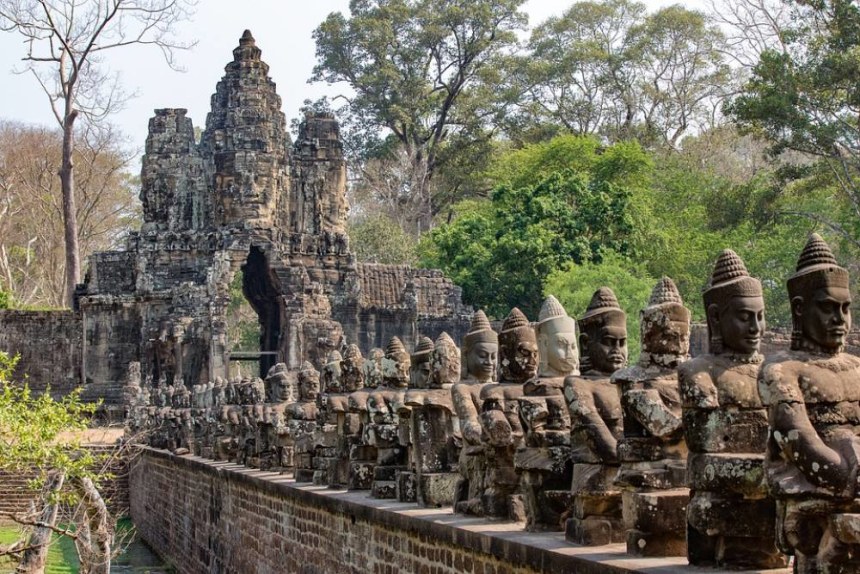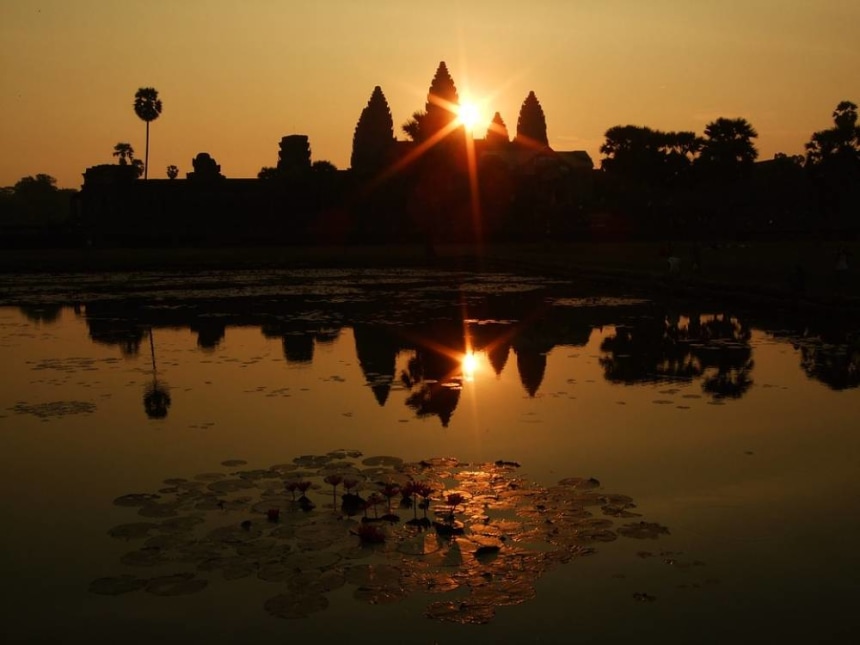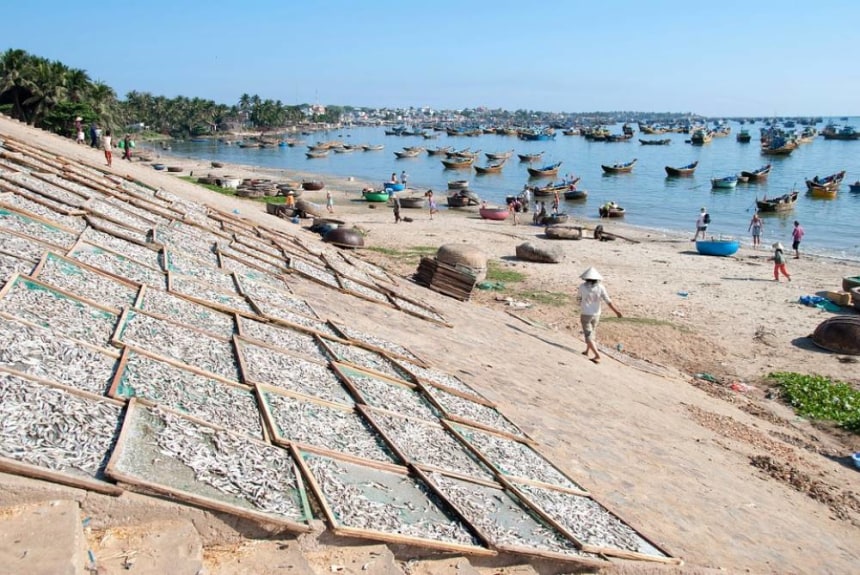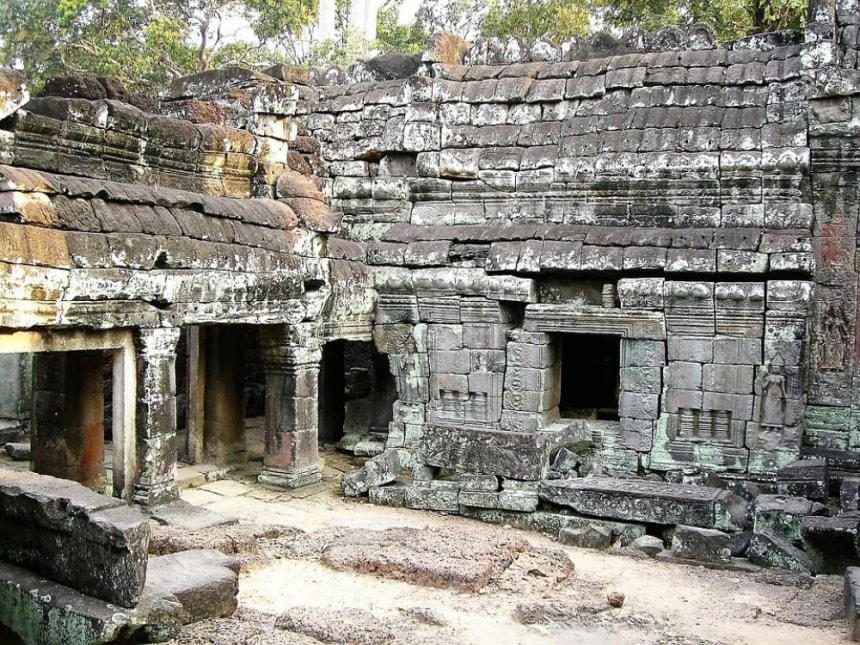
TEMPLE HISTORY
Between the 9th and 13th centuries, a vast area in Southeast Asia was ruled by the Khmers, one of the most advanced, powerful and productive dynasties in the globe. They were the masters of managing cities which were great in layout with numerous temples, residencials with sofisticated water irrigated system such as channels and pools.
In North-Western Cambodia over 77 square miles is dotted with temples unrivaled in their architectural greatness. The city of Angkor Thom, enclosed by 6 miles long by 32 feet high laterite wall and a huge moat of crocodiles beyond, once was the world most populated city with as many as one million people in 12th century.
To the south of Angkor Thom is Angkor Wat, which is designated as one of the world wonders and the largest building ever constructed in stone with a gigantic moat and long entrance. One of the travels great adventures is to awake in the dark, walk through the stillness and coolness of Cambodian night and watch the first light of dawn over the 5 towers of Angkor Wat.
The Angkorian period was characterized by almost ceaseless war with neighboring nations. In 1432, the expansionists Siamese sacked the Angkor city definitely, carting off most of the royal court including nobles, priests, dancers and artisans to Ayuthaya. Thus, Khmer capital cities ended up by moving on in the favor of a new site some 77 miles to the East on the bank of the Mekong River, Modern day Phnom Penh and the old capital was largely abandoned.
Only just a hundred and sixty years later, a vast complex of an ancient city in the jungle was incidentally heard by early Portuguese traders followed by a Buddhist Japanese in 1632 who inscribed poem on one pillar of the temple. In addition, another Japanese pilgrim made a noted map of the temple which survived in 1715 copy. By 1860s John Thomson made the first photograph of the temple.
A French botanist Henry Mohout’s detailed accounts of the monument often cited as a ‘rediscovery’ by the French who took control of Cambodia shortly thereafter, raising awareness to the outside world.
The open sky policy of Cambodia government made much possible visits to see these lost wonders though the violence of the Vietnam War, Khmer Rouge, and Cambodian civil war made travel all impossible, yet until the death of the Khmer Rough Leader, Pol Pot, in 1998. The return of peace and stable politics slowly permited gateway open to these ruins after land mines are removed from the ground.
The spectacular and grand ruins of Angkor obviously draws in millions of visitors every year. It becomes a big threat to the structure of the temples as well as for those who willing to have themselves to enjoy the temples without the mass crowds.
So go to Angkor Wat now my friend, to its ruins and dream, the unmatched wonders in Asia.

